-
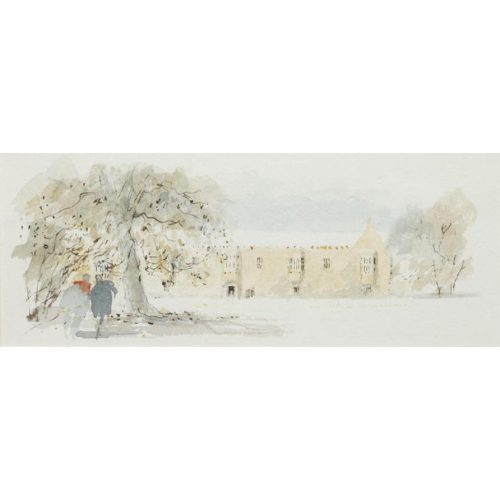 Sir Hugh Casson CH, KCVO, PRA, RDI (1910-1999) St John’s College, Oxford, Canterbury Quad Signed, inscribed with title and dated ‘1988’ (on a label attached to the backboard) Pencil, pen, ink and watercolour 10.5 x 27cm (4 1/8 x 10 5/8in). Painted for inclusion in Hugh Casson’s Oxford (Phaidon Press Ltd, 1988). Click here for biographical details and other works by the artist. If you are interested email info@manningfineart.co.uk or call us on 07929 749056.
Sir Hugh Casson CH, KCVO, PRA, RDI (1910-1999) St John’s College, Oxford, Canterbury Quad Signed, inscribed with title and dated ‘1988’ (on a label attached to the backboard) Pencil, pen, ink and watercolour 10.5 x 27cm (4 1/8 x 10 5/8in). Painted for inclusion in Hugh Casson’s Oxford (Phaidon Press Ltd, 1988). Click here for biographical details and other works by the artist. If you are interested email info@manningfineart.co.uk or call us on 07929 749056. -
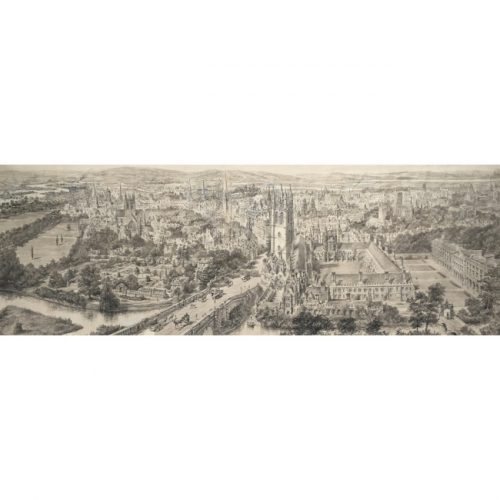
Henry William Brewer (1836 - 1903)
Panorama of Oxford (1893)
Pen and ink heightened with body colour 40 x 123 cm Signed and dated 1893. Published in The Graphic as a photogravure image. A huge and beautifully-detailed panorama of Oxford at the end of the nineteenth century. POA. Condition: very good. If you are interested, please email info@manningfineart.co.uk or call us on 07929 749056. Click here for other views of the city of Oxford. -
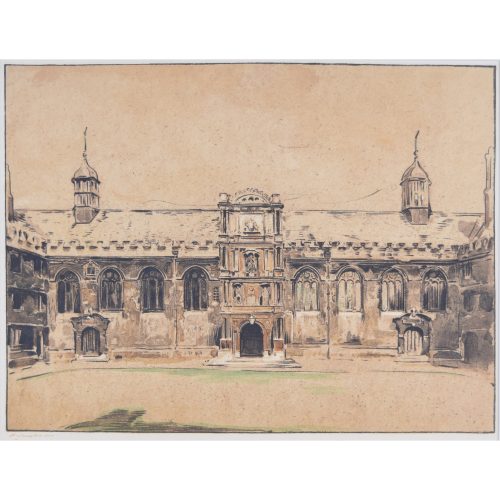
William Nicholson (1872 - 1949)
Front Quad, Wadham College, Oxford
Lithograph 26 x 34.5 cm Signed. Published by Stafford Gallery. Sir William Nicholson was a British painter and printmaker. He is also known as an illustrator, author of children’s books, stained glass designer, and theatre set designer. In 1902, he produced a series of watercolour, chalk, and pen drawings of Oxford which were published in 1905 by the Stafford Gallery as two portfolios of lithographs, with descriptions by Arthur Waugh (father of Evelyn Waugh). These dramatic depictions of Oxford show Nicholson’s interest in the effects of light and shade on the city’s architecture. Condition: generally very good. In conservation mount. If you are interested, please email info@manningfineart.co.uk or call us on 07929 749056. Click here for other views of Wadham College, Oxford. -
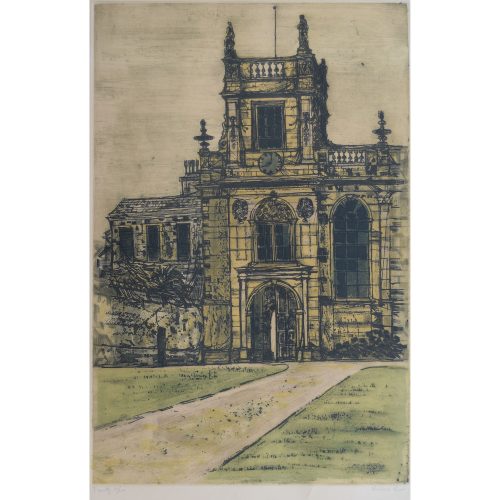
Richard Beer (1928 - 2017)
Trinity College, Oxford (1964 / 65)
Etching and aquatint 42.5 x 58 cm Numbered 27 / 100. Published by Editions Alecto. A copy of this print, owned by the Government Art Collection, is currently in the British Embassy in Saudi Arabia. Richard Beer was a painter and printmaker who focused on architecture and landscapes. He studied at the Slade School of Art from 1945 to 1950 and then studied at the École des Beaux Arts in Paris on a French Government Scholarship. He then worked and studied at Atelier 17, an art school and studio run by the artist Stanley William Hayter (arguably one of the most significant printmakers of the 20th century). The atelier was highly influential in the study and promotion of 20th-century printmaking, and it was here that Beer developed his etching skills. Beer then went on to work for the Royal Ballet choreographer John Cranko, designing the sets and costumes for "The Lady and the Fool" at the Royal Opera House in Covent Garden. He also produced several book illustrations and book jacket designs. Beer taught printmaking at the Chelsea School of Art for 40 years and was also a founding member of the Printmakers' Council. He travelled widely through Italy, France, Spain, and Morocco, sketching prolifically and painting rural and architectural landscapes. Beer would then make etchings and paintings in his Primrose Hill studio, inspired by the landscapes he had sketched and seen while travelling. Probably his greatest work was a collaboration with John Betjeman to produce a portfolio of prints of ten Wren Churches in the City of London for Editions Alecto, copies of which are in The Government Art Collection. That collection contains a total of 54 prints by Beer, and the Tate Gallery’s collection holds another seven. His series of Oxford architectural engravings was also produced for Editions Alecto, as was a series of predominantly architectural views in Southern Europe. If you are interested, please email info@manningfineart.co.uk or call us on 07929 749056. Click here for other views of Trinity College, Oxford. -
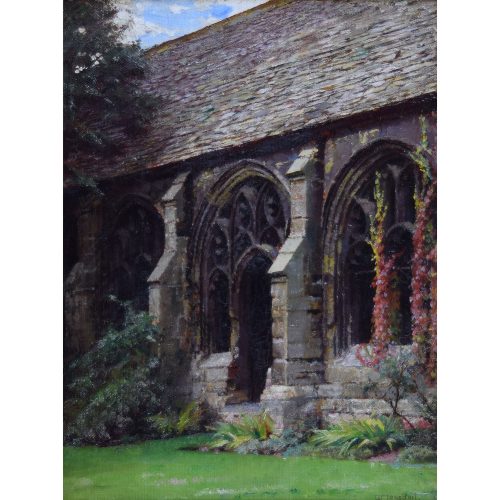
William Logsdail (1859-1944)
Cloisters of New College, Oxford
Oil on board 39 x 28 cm Signed lower right. In original Watts-style gilt frame. Logsdail was educated at Lincoln Cathedral School and then Lincoln School of Art. Initially intending to become an architect, he was encouraged to divert his attentions to painting. After winning a Gold Medal in a competition against students of other English art schools, Logsdail continued his painting career at the Ecole des Beaux Arts in Antwerp. His promise was recognised by the Royal Household when his 1880 picture The Fish Market was purchased for Osborne House. Logsdail went on to spend the next twenty years in Venice, studying and painting the city's architecture. His 1883 rendering of the Piazza of St Mark's, Venice, was named by the Royal Academy as picture of the year. He also spent time painting the colleges of Oxford and Cambridge. In 1912, having moved away from architectural painting and towards portraiture, he was elected to the Society of Portrait Painters. He settled in Oxfordshire in 1922. If you are interested, please email info@manningfineart.co.uk or call us on 07929 749056. Click here for other views of New College, Oxford. -

Bryan de Grineau (1883 - 1957)
Canterbury Quad, St John’s College, Oxford
Pencil 46 x 34 cm Signed and titled lower right. Drawing published in The Illustrated London News, 1955. Click here for other views of St John’s College by this artist and biographical details. Condition: very good. If you are interested, please email info@manningfineart.co.uk or call us on 07929 749056. Click here for other views of St John's College, Oxford. -

Bryan de Grineau (1883 - 1957)
The Hall, St John’s College, Oxford
Pencil 34 x 56 cm Signed and titled lower right. Drawing published in The Illustrated London News, 18 June 1955. Condition: very good. Click here for other views of St John’s College by this artist and biographical details. If you are interested, please email info@manningfineart.co.uk or call us on 07929 749056. -
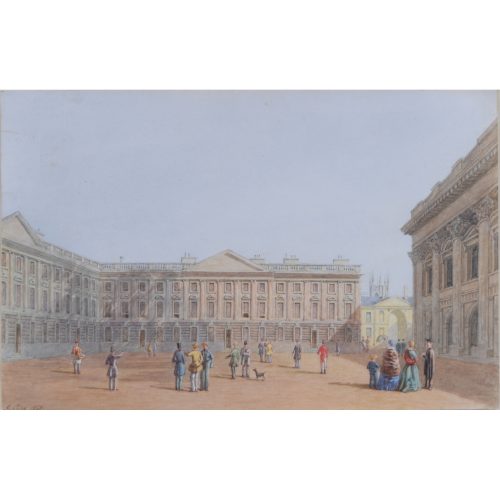
George Pyne (1800 - 1884)
Peckwater Quad, Christ Church, Oxford
Watercolour 27.5 x 17.5 cm Signed and dated 1849. A marvellous view of the Peckwater Quadrangle, more affectionately referred to as Peck Quad and known for having arguably the best undergraduate rooms in all of Oxford. The buildings on the north, east and west sides of the quad were designed by Henry Aldrich are one of the earliest examples of English neo-Palladian architecture. They were built by William Townsend between 1706 and 1711, while the Library on the south side was completed later in the eighteenth century. Peck looks rather different today - it is now mostly filled with lawn and hosts Christ Church's extremely large Christmas tree each year. In Pyne's day it was lawnless and filled with elegant pedestrians in nineteenth-century costume; in this view, afternoon light slants down over the buildings, and the lengthening shadows cast by the library creep into the quad. George Pyne was related to two founders of the Society of Painters in Watercolours - William Henry Pyne was his father, and John Varley his father-in-law. Pyne trained as an architectural draughtsman and lived in Oxford from the 1850s until his death in 1884, specialising in views of the city and its colleges. His Oxford pictures are both architecturally-minded and romantically creative, often combining intensely detailed depictions of college buildings with imagined pedestrian scenes. Pyne was also noted for his views of Cambridge and Eton, and for his drawing manuals 'A Rudimentary and Practical Treatise on Perspective for Beginners' (1848) and 'Practical Rules on Drawing for the Operative Builder, and Young Student in Architecture' (1854); the latter texts offer an insight into his method of depicting architecture and its surroundings. Condition: very good. If you are interested, please email info@manningfineart.co.uk or call us on 07929 749056. Click here for other views of Christ Church.
